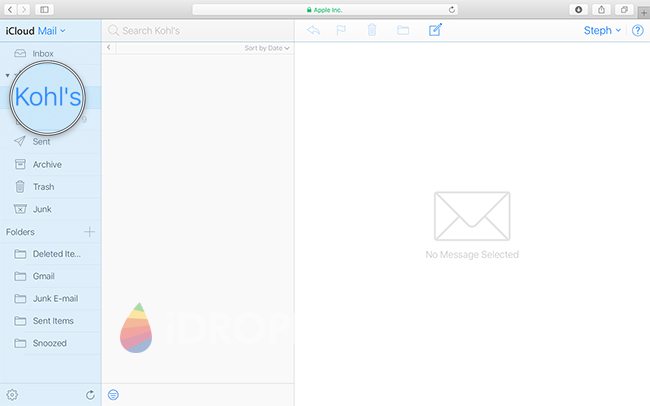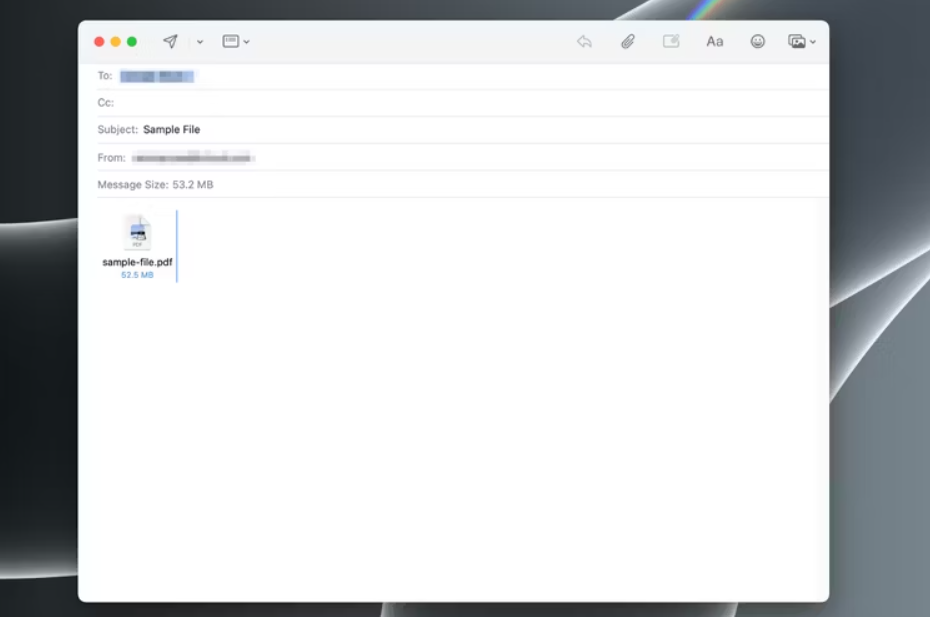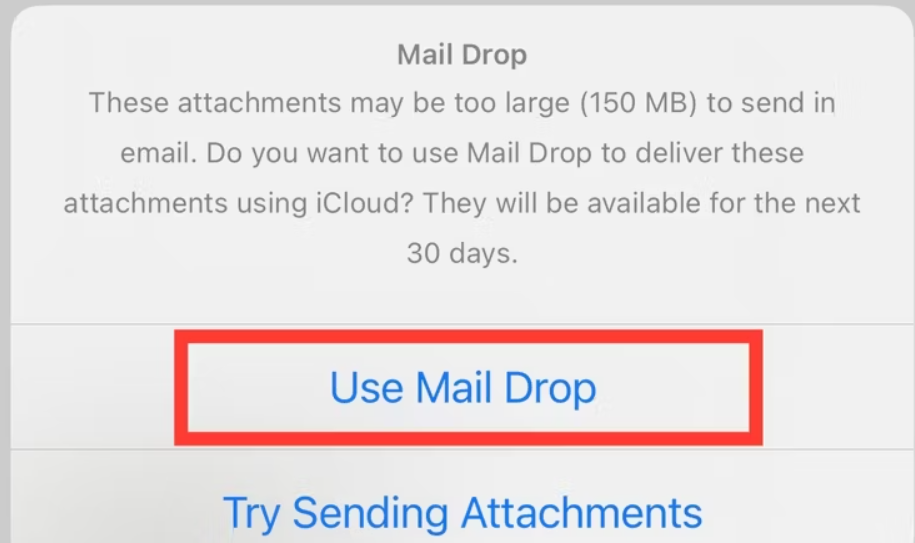
Get Business Email
No domain name required
Maildrop Alternative
Explore Neo today!
Email has become an indispensable part of everyday life. Beyond that, it provides a uniform platform to share information in the form of text, images, videos, and graphics. Additionally, you can attach any file format to your emails to streamline your workflow. However, most providers have a file attachment limit, beyond which they can’t incorporate your files or folder with the email.
Are you tired of having to sift through several platforms to find the right to send large files seamlessly through email? Moreover, even if you have found the ideal option, compressing your file is taking too much time and disrupting your productivity? Not to mention, the security risks you might be exposing your system to just to send the important files to your colleagues or leads. This is where Apple’s Maildrop is useful!
This useful tool allows you to send any large file - whether it is a presentation, a file with audio and visual elements, or full of graphics for your new email marketing campaign - Maildrop lets you safely and quickly send the attachment through any email client. So, what exactly is Maildrop, and how do you use it? This blog is the right answer for you! Continue reading to know more!
What is Maildrop?
Maildrop is a powerful and robust feature by Apple that lets users send large files through email. The files can be as large as 5 GB and in any format. Moreover, the flies are uploaded to iCloud by Maildrop, and a secure link is generated for the uploaded content, which can be shared with your email. The link will remain active and downloadable for a month. After the month, the recipients will not be able to download the content attached.
While you need an Apple ID to utilize this function, recipients using any browser or mail service can view the attached file sent via Maildrop. It should also be noted that although the files are uploaded to iCloud, they don’t count towards your total storage limit.
This is one of the major benefits of using Maildrop, especially for those who need large storage space and are not too keen on buying additional iCloud space. However, there is a sending limit of 1 TB. If you use up that limit, you will have to wait for the files you previously attached to deactivate before you can use this feature again.
Benefits of Maildrop
There are many benefits to using Maildrop besides the convenience of email attachments. Here's how Maildrop can transform the way you handle email communication:
1. Send Large Files
One of Maildrop's main benefits is sending files up to a startling 5 GB in size. This is a game changer for anybody who routinely shares enormous files, such as high-resolution films, lengthy presentations, or multimedia projects. Maildrop eliminates the frustration of reaching typical email attachment size constraints.
2. No Impact on iCloud Storage
By default, Apple users get 5 GB of iCloud account storage space. However, if you are worried about whether this storage quota will be impacted by uploading Maildrop files to it, then put those concerns to rest. Your iCloud storage, despite having Maildrop attachments, will be untouched, as the uploaded files will not count toward your storage quota.
3. Easy to Use
Maildrop's seamless connection with the Mail app on Apple devices and iCloud makes it easy to use. Maildrop is pre-installed, so there's no need to download extra software or learn a new interface. Such simplicity reduces any possible learning curve and guarantees a seamless user experience.
4. No Need for Compression
With Maildrop, you don't need to compress your files when they are 5 GB or less in size. In addition to saving you a great deal of time, this maintains the integrity and quality of your files so the receiver gets them in their native form.
5. Recipient Convenience
Maildrop puts the recipient's convenience at the forefront. Recipients may quickly download the files you've shared using any web browser, regardless of whether or not they have an Apple Email, ID, or device. This cross-platform compatibility removes any platform limitations and compatibility problems to guarantee a smooth experience for all parties involved.
6. Temporary Storage
Maildrop has an integrated security feature along with plenty of storage for your shared files. Your files sent using Maildrop automatically become inactive and can’t be downloaded by the recipient after 30 days. This feature ensures that any information that was meant to be accessible by the receiver for only a certain time is not available beyond 30 days.
7. Bypass Third-Party Services
With Maildrop, you can wave goodbye to the need for third-party file-sharing services. Eliminating the intermediary speeds up the transfer of big files, lowering any security concerns and preserving data control. Maintaining everything within the Apple ecosystem, this integrated solution offers a more unified and effective experience.
Using Maildrop with iCloud Mail on Mac
Now that we know the benefits of using Maildrop, it’s time to see how to use this service with iCloud. Apple has made it extremely easy to connect iCloud and Maildrop accounts for a streamlined email-sending experience. To use Maildrop with your iCloud account, follow this step-by-step guide:
Step 1: Access iCloud Mail Settings
Visit the official iCloud website to log into your account. Note that you can create iCloud Mail only with an Apple device.

Now, Open Mail settings.

Step 2: Enable Maildrop
Navigate to the Composing option in the settings. On the iCloud Mail settings, enable Maildrop by checking the 3rd option by checking the use Maildrop box.

Step 3: Use the Maildrop Feature
Compose your email as you normally would.

Click on the file attachment clip symbol to add your attachments.

You can now attach a large single or multiple attachments you want. iCloud Mail will automatically send it using the Maildrop option. You don’t have to compress or upload the files manually.
Once the link to your file is attached, you can send the mail using the paper plane symbol. The attachment in the sent email will have a date until which it will be accessible by the recipient.

You can send your large attachments on iCloud Mail using Maildrop with 3 simple steps. Moreover, by enabling the automatic settings, you don’t have to worry about wasting your time and productivity uploading a file manually.
Using Maildrop with iCloud Mail on iPhone or iPad
The steps to using Maildrop via your iPhone or iPad are more simplified than using it on a Mac device. Let’s look at the steps:
- Open the iCloud Mail app.
- Compose your email and click on the attach file option.

- Add your attachment, and if the file size is large, iCloud Mail will ask you whether you want to send the attachment using Maildrop.

- Choose the Use Maildrop option and send your email. The activation date for your attachment will also be included in the sent email.
Using Maildrop with Gmail
You can use the Maildrop feature with other email clients and providers, like Outlook and Gmail. All you have to do is add your iCloud Mail account to the platform. To attach large files to Gmail using Maildrop, follow the steps below.
Step 1: Access Gmail Settings
Open your Gmail account and add your Apple ID. You will need an app-specific password in addition to the one you already use for your Apple account. You can generate a new password by going to your account page.
Step 2: Send Large Files Using Maildrop
Compose your email and add your attachment using the iCloud Mail account on Gmail. The attachment will automatically be sent via Maildrop if the file size is bigger than 25 MB. Click on the send button to send your email.
Alternate Method
You can add your iCloud account to Gmail or any other email service and use the Maildrop function. Moreover, if you already have an Apple ID, you can use a Windows or any other OS by adding your iCloud Mail account to the system and sending your mail from there.
Common Issues of Using Maildrop and Their Solutions
Although utilizing iCloud Maildrop is usually simple, users might run across a few typical problems. Here are some potential problems and their solutions:
Issue 1: Maildrop functionality not appearing in iCloud Mail settings.
Solution: Make sure you're using the most recent version of the iCloud Mail app or viewing it using a compatible web browser. If the mail problem continues, try logging out and authenticating back into your iCloud account.
Issue 2: The attachment size exceeds 5 GB.
Solution: Maildrop can only send files of 5 GB or less. If your file size exceeds this limit, you can compress it to reduce the size. Another option is to divide the file into two or more parts and send them in separate emails.
Issue 3: Email not getting sent despite the attachment size being less than 5 GB.
Solution: There could be various reasons for this. You may have exceeded Maildrop’s storage limit of 1 TB. In this scenario, you will have to wait for your other links to expire before using Maildrop. Another scenario could be that you exceeded the daily limit of sending emails, which is 1,000. If so, you will have to wait a day until you can start sending emails again. If none of these are the issue, check how many recipients you have added to the email. iCloud only lets you add 500 recipients per email.
Final Words
Success and productivity depend on good email management. Maildrop is a powerful tool that improves your email experience by allowing you to send large attachments easily. By following the step-by-step instructions for using Maildrop with iCloud and Gmail, you can say goodbye to inbox clutter and hello to a more productive email routine.
However, iCloud Mail and Maildrop have their own challenges. If you are looking for a versatile email that allows an attachment size of 30 MB and integration of HTML-rich elements, Neo is the solution for you. Furthermore, Neo lets you build permanent, business-like email addresses that complement your brand identity to take your online presence to the next level.
Neo also offers a complimentary one-page website and customizable email signature to enhance your brand. So, what are you waiting for? Register for any of Neo’s plans and enjoy a limited-period trial today!
Frequently Asked Questions
Q1. Is Maildrop free to use?
Indeed, Maildrop is a free service that is connected to Gmail and iCloud, among other email providers. There are no subscription fees or additional costs associated with using Maildrop.
Q2. Can I use Maildrop with email accounts other than iCloud and Gmail?
You can use Maildrop with any email provider as long as it lets you add your iCloud Mail account. You can also incorporate your Apple ID into any other operating system to use this feature.
Q3. How secure is Maildrop?
Maildrop protects your files using industry-standard encryption procedures. For further privacy, Maildrop automatically deactivates file attachment links from recipient emails.
Q4. How long are files shared through Maildrop available for download?
Files shared using Maildrop (for big file attachments) are downloadable for 30 days. After this period, the files are automatically deleted from Apple's servers to ensure temporary storage and maintain privacy.

Get Business Email
No domain name required
Maildrop Alternative
Explore Neo today!





.svg%201.svg)
.svg)
.svg)
.svg%201.svg)



